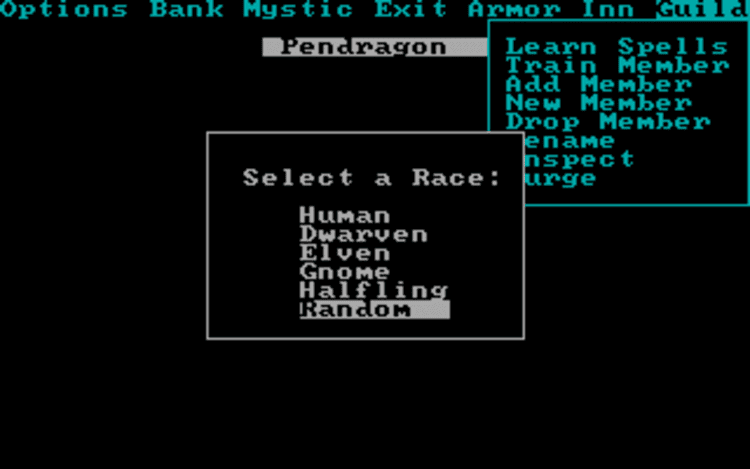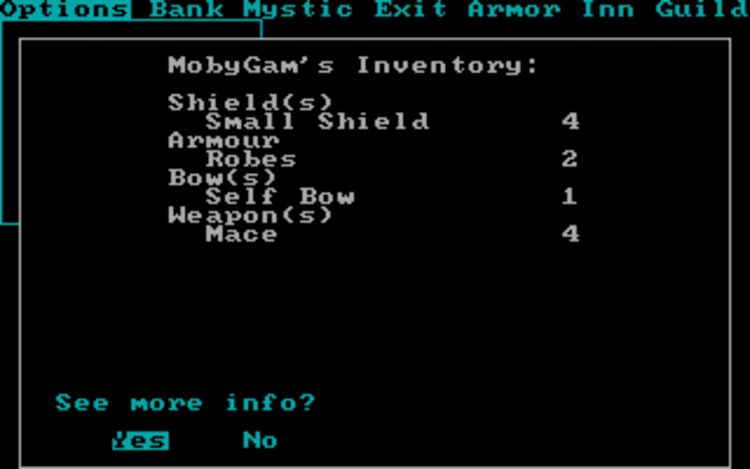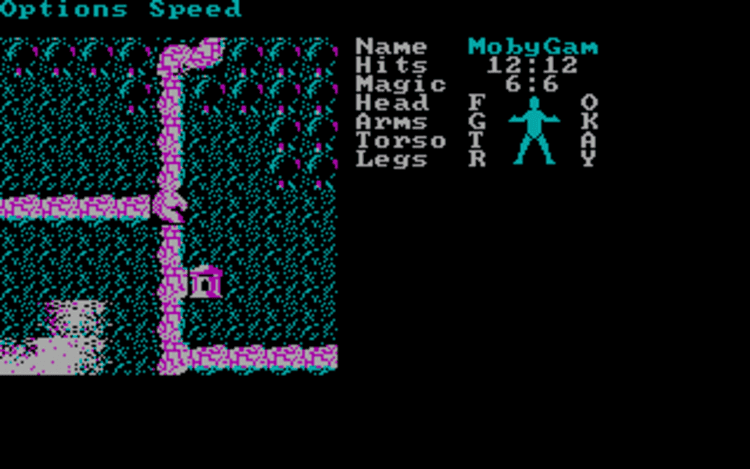
Phantasie III: The Wrath of Nikademus is a classic role-playing game from Strategic Simulations, where you build a hardy party and march across a monster-strewn archipelago to stop a rising tyrant. Fans who love to play deep dungeon crawls will feel at home with its tactical combat, skill checks, and treasure-driven progression. If you enjoy the squad strategy of Wizardry or the open-ended questing of Might and Magic, this game captures a similar spirit while keeping exploration brisk and readable. Whether you prefer to play offline or experience it online, its design remains approachable, rewarding, and timeless.
Phantasie III: The Wrath of Nikademus arrives as a polished crescendo from Strategic Simulations, a publisher renowned for bringing pen-and-paper sensibilities to the computer screen. The game builds on the strengths of its predecessors while sharpening the pace of exploration and the clarity of combat. You assemble a party of adventurers, choose their races and professions, and set forth to thwart Nikademus, a shadowy power whose influence has curdled the land. Veterans can import heroes from earlier chapters, but newcomers can just as easily roll a fresh team and dive straight into its quest. The structure is classic and satisfying: town hubs for rest and purchase, wilderness routes that tease secrets at their edges, and dungeons that braid puzzles with peril.
Phantasie III frames its world as a chain of islands, each with distinct threats and textures. This geography does more than decorate the map; it guides a natural progression in difficulty. Early regions train you to manage resources and understand turn order in fights, while later locales insist on keen preparation—choosing who carries the curing items, which spells to memorize, and what risks to take before the next safe harbor. Perhaps the game’s greatest narrative strength is restraint. It suggests a larger mythology without overburdening you with exposition. Tavern rumors seed quests, cryptic notes hint at optional challenges, and bosses announce themselves with enough menace to make victory feel earned rather than inevitable.
At the heart of the game is its turn-based combat engine. Encounters emphasize formation, spell timing, and the trade-off between conserving resources and pushing for a decisive finish. Front-line fighters anchor the party, thieves manage locks and traps, and casters shape battles with buffs, debuffs, and area spells. The rule set rewards planning: identify which enemies must be neutralized first, weigh defensive enchantments against aggressive openings, and decide when to retreat to regroup. Leveling is brisk enough to feel rewarding but measured so that each new spell or weapon tier matters. Equipment upgrades are frequent signposts of progress, lending each dungeon a tangible payoff beyond experience points.
Exploration blends overworld travel with first-person dungeons. The cartography is clean, with layouts that encourage methodical mapping and careful observation. Secret doors, trapped chests, and one-way passages keep you alert, while riddles offer satisfying “aha” moments that break up pure combat loops. Shops feel meaningful because gold is never trivial; deciding whether to buy a stronger blade or reserve funds for critical scrolls carries weight. Side areas hide optional bosses, rare gear, and shortcuts that reward curiosity. This balance—combat for tension, exploration for discovery, and towns for reflection—creates a steady, engaging rhythm that holds up remarkably well.
The interface is intentionally lean, elevating readability over flash. Menus are quick to parse, combat feedback is immediate, and the game’s visual language keeps you focused on decisions rather than deciphering clutter. Sound and visuals are simple but iconic, creating a consistent mood that supports long play sessions. The absence of unnecessary frills means your attention stays on route planning, party survival, and the next chest that might redefine your strategy.
If you prefer a modern, convenient way to revisit a classic, you can play Phantasie III: The Wrath of Nikademus online. This approach lets you enjoy the full game free, directly in a browser, with responsive controls that feel natural on desktop and mobile devices. Without restrictions tied to specific hardware, the adventure becomes easy to access for quick sessions or marathon crawls alike. Your party’s journey—from humble beginnings to climactic confrontations—translates smoothly to touchscreen or keyboard, preserving the careful tactics and exploration that define the experience.
The enduring charm of Phantasie III lies in how it respects your time while honoring tradition. It understands that players come to a role-playing game for meaningful choices and a sense of growth. Every island visited and every dungeon cleared is a story about preparation, risk, and adaptation. The narrative avoids melodrama, yet the stakes feel personal because you’ve sculpted the heroes who face them. There’s comfort in the cadence of resting at an inn, plotting the next foray, and returning triumphant with just enough coin to afford a crucial upgrade. That loop, honed by SSI’s experience with computer RPGs, remains compelling well beyond its era.
For many, Phantasie III functions as a bridge between early dungeon crawlers and later, more elaborate RPGs. It keeps the essential grammar of the genre—deliberate combat, incremental power, and map mastery—while smoothing rough edges into a friendlier flow. Newcomers will appreciate how quickly it communicates its systems, and veterans will relish the tactical nuance lurking in seemingly simple encounters. Few games distill the genre’s pleasures so cleanly.
Phantasie III: The Wrath of Nikademus is a classic game that rewards patience, planning, and curiosity. Movement is typically handled with the arrow keys or number pad, menus respond to letter commands, Enter confirms choices, and Esc backs out—an intuitive scheme that makes exploration and combat brisk. Its blend of party customization, dungeon design, and strategic battles ensures that each session feels purposeful and satisfying.
All used codes are publicly available, and the game belongs to its original authors.
Share game
Share game




Share game